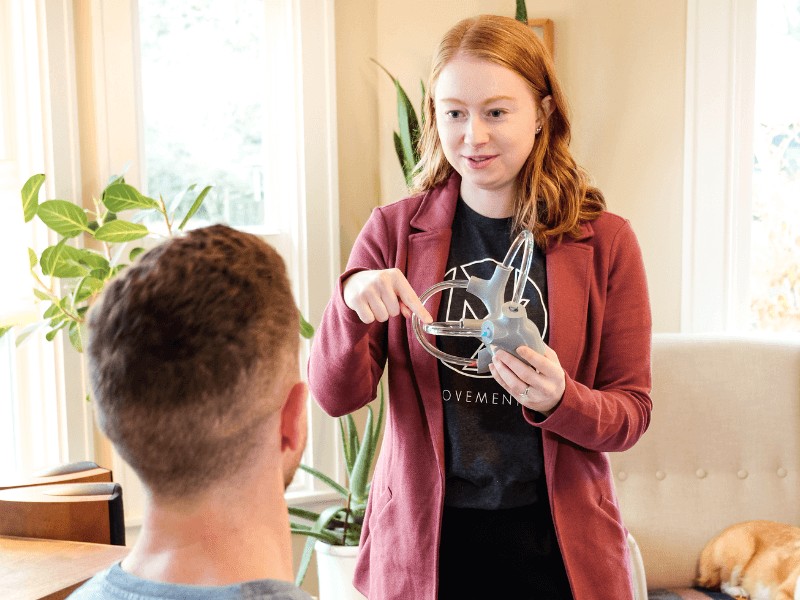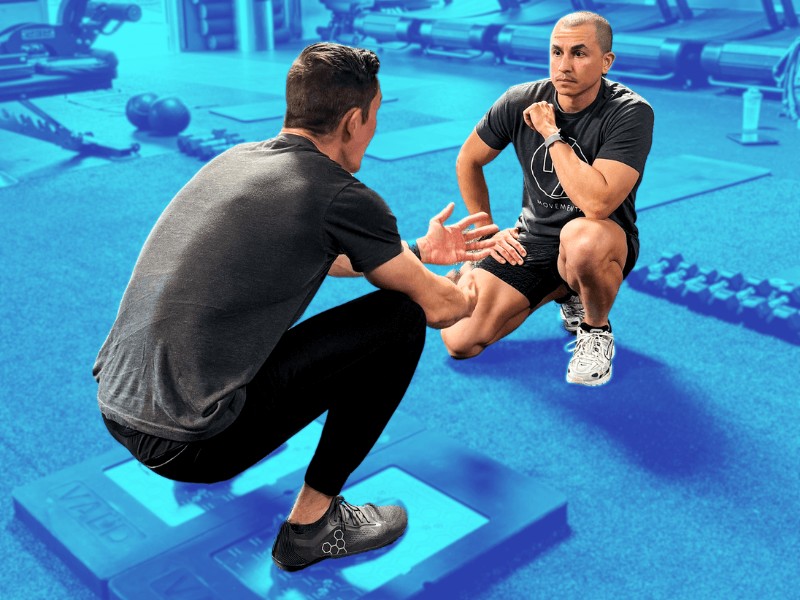Bridging the Gap: Understanding and Managing Diastasis Recti During Pregnancy
Many of my postpartum clients express a common desire: ‘I want to get rid of my mom pooch.’ As a pelvic health physical therapist and a mom of two myself, I understand firsthand the challenges and pressures surrounding postpartum body image. During our sessions, when the topic of body image arises, I make it a point to validate my clients’ feelings. After all, I’ve experienced my own struggles in accepting my body following pregnancy.
I remind my clients of the incredible feat their bodies have accomplished—growing a human being for ten months. I emphasize the resilience and adaptability of the body throughout pregnancy and childbirth. It’s a process that demands time and patience to recover from fully.
Moreover, I discuss the complex factors influencing our desire to reclaim our pre-pregnancy bodies. From societal pressures to unrealistic expectations about postpartum recovery and our personal battles with body image, it’s a multifaceted journey we navigate together. By acknowledging these realities, we can approach postpartum rehabilitation with compassion, understanding, and a focus on holistic well-being.
Pregnancy brings with it a myriad of changes, not just to your lifestyle and emotions, but profoundly to your body. One such physical transformation, often not discussed openly but widely experienced, is diastasis recti. This common condition can leave many expecting women feeling unsure about the changes happening to their bodies and uncertain about how to address them. Here, we’ll aim to shed light on this prevalent condition and offer guidance for those experiencing it.
Understanding diastasis recti is the first step towards managing it effectively. Despite its prevalence, many women are either unaware of the condition or lack proper resources to address it both during and after pregnancy. Our goal with this page is not just to inform but to empower. By providing evidence-based information, practical advice, and supportive guidance, we aim to help you navigate the journey of pregnancy and postpartum recovery with confidence and optimism.
As you continue to read, you will find detailed sections on the symptoms to watch for, the causes behind diastasis recti, various treatment options including physical therapy, and exercises that can help in managing the condition. We’ll also delve into the crucial role of prevention and conclude with empowering steps you can take towards recovery. Whether you are experiencing diastasis recti, know someone who is, or are simply seeking to expand your knowledge, this guide is designed to provide value and support through factual, comprehensive information and practical advice.
What is Diastasis Recti?
Diastasis recti occurs when the two large parallel bands of muscles that meet in the middle of the abdomen separate. This muscle, often called the “six-pack” muscle, is crucial for maintaining core strength, stability, and the overall integrity of the abdominal wall. The separation occurs along the linea alba, the connective tissue that runs down the middle of the abdomen, from the bottom of the ribcage to the top of the pubic bone.
While diastasis recti can affect anyone, studies have shown that it is particularly prevalent among pregnant women, with incidence rates ranging from 30% to 60% during and after pregnancy. It is a natural part of pregnancy—the rectus abdominis muscle must stretch to provide room for the growing uterus. A month or so after birth, the rectus abdominis should return to its normal position. However, the ability for the muscle to contract properly can be inhibited due to changes in the ability for the linea alba to tense the surrounding musculature. This is when diastasis recti can become symptomatic and affect quality of life.
When it becomes symptomatic, diastasis recti can significantly affect an individual’s physical functioning. It might manifest as a noticeable bulge or “pooch” in the stomach, especially when the abdominal muscles are strained. Beyond cosmetic concerns, this condition can lead to a weakened core, thus impacting posture, balance, and the ability to do everyday activities, including taking care of a new baby. Tasks that were once taken for granted, such as lifting objects, bending, or even standing for prolonged periods, can become challenging. Symptomatic diastasis recti can often exacerbate lower back pain, pelvic floor dysfunction, and in some cases, hernias due to the increased vulnerability of the abdominal wall.
Symptoms of Diastasis Recti During Pregnancy
Navigating through the treatment options for diastasis recti can feel overwhelming, but understanding the range of possibilities empowers us to make informed decisions about our care. Treatment plans should be tailored to your specific needs and personal goals.
- Physical Therapy: Physical therapy is often the first line of treatment for diastasis recti. A pelvic floor physical therapist can design a personalized program that includes exercises to strengthen the core, increase mobility and strength of the pelvic floor muscles, improve posture, and enhance functional movement patterns. This non-invasive approach focuses on retraining and restoring the abdominal muscles’ function through targeted exercises and can significantly improve the condition without the need for surgery.
- Exercise Programs: Specific exercise programs, often recommended or supervised by a pelvic floor physical therapist, target the strengthening of the transverse abdominis (the deepest layer of abdominal muscles), stretching and strengthening of the pelvic floor muscles, and proper recruitment of the diaphragm to support recovery. These programs typically modify exercises that can exacerbate the separation, such as crunches or sit-ups, and instead focus on safe, effective movements that promote healing.
- Support Garments: Wearing a support garment or belly band can provide temporary relief and support to the abdominal area. These garments can help improve posture and offer some stabilization during activities, especially in the early months when recovering postpartum. However, they should not be relied upon as a long-term solution.
- Lifestyle Modifications: Making adjustments to daily activities can help manage symptoms and prevent further symptoms exacerbation. This includes learning proper body mechanics for lifting, maintaining good posture, and modifying activities that strain the abdominal muscles.
- Nutritional Support: Although not a direct treatment, nourishing the body with foods rich in vitamins and minerals can promote healing of the abdominal muscles and surrounding tissue. Consulting with a nutritionist or dietitian can provide guidance on a balanced diet that supports overall health and recovery.
- Surgery: In more severe cases where conservative treatments have not provided satisfactory improvement, surgical intervention may be considered. Procedures may involve the surgical repair of the separated muscles, along with the removal of any excess skin or fat to restore the abdominal wall’s integrity and appearance. Surgery is typically recommended only after all non-invasive options have been explored.
In the next section, let’s dive deeper into the benefits of physical therapy for diastasis recti.
How Physical Therapy can help Diastasis Recti During Pregnancy
Physical therapy plays a pivotal role in managing and treating diastasis recti, offering a path to recovery that is both personalized and holistic. By working with a skilled physical therapist who specializes in pregnancy and postpartum care, expecting mothers can receive care tailored to their specific condition and goals.
At the core of physical therapy for diastasis recti is the emphasis on strengthening the abdominal and pelvic floor muscles. Unlike generic fitness programs, specialized physical therapy focuses on precise, controlled movements that target the deep core muscles without placing undue stress on the abdominal separation. Initially, techniques such as deep stomach muscle activation, pelvic tilts, and gentle, controlled leg and arm movements are often prescribed. These exercises are designed to increase muscle strength and endurance gradually, ensuring the abdominal muscles are coaxed back towards their original alignment without exacerbating the separation. These exercises are gradually progressed to help the abdominal muscles adapt to the demands of motherhood.
In addition to exercise, physical therapists use manual therapy techniques to help improve tissue mobility and function. This hands-on approach can assist in alleviating discomfort and improving the alignment and support of the abdominal muscles. Therapists also educate patients on proper body mechanics and posture.
Another significant aspect of physical therapy for diastasis recti is the customization of the treatment plan over time. As individuals progress and their strength improves, the physical therapist adapts the program to continue challenging the muscles in a safe and effective manner. This dynamic approach ensures that patients not only work towards closing the gap in their abdominal muscles but also build a foundation of core strength and stability that supports their overall health and well-being.
Through a combination of targeted exercises, manual therapy, and education, physical therapy offers a comprehensive solution for managing diastasis recti.
Conclusion
As we conclude our exploration of diastasis recti, it’s important to reflect on the journey towards understanding and managing this condition. The path to recovery is not only about closing the gap but also about reclaiming your body’s strength and functionality and accepting the amazing feat your body accomplished in growing a human.
Consider for a moment the steps you can take today toward a healthier tomorrow. Have you observed any symptoms of diastasis recti in yourself? Are there changes you could make to your daily routine that might support your core health? Most importantly, have you considered seeking the guidance of a skilled physical therapist to navigate this journey?
Taking action is the first step towards healing. Physical therapy for diastasis recti after pregnancy offers a personalized and effective approach to care and provides you with the tools and knowledge necessary for recovery and increasing your confidence as you navigate your journey of motherhood. We encourage you to reach out and request a session with MovementX.
Our team of specialized physical therapists in Billings, MT is ready to assist you on your path to recovery. We also offer nationwide care in other cities across the US. Let us help you bridge the gap, not just in your abdominal muscles, but in your journey towards a stronger, healthier you.
Share This Page
More Conditions We Treat
Found this page interesting? Learn more about other conditions we treat:





